|
Oregon Eastern Division UP Scrap Trains |
|
|
|
Union Pacific filed a lawsuit against the Wyoming/Colorado Railroad in the spring of 1993, after WYCO had salvaged thirty miles of the Burns branch. UP claimed WYCO had violated the three year operating agreement for the line and that UP had the right to repurchase the line for the original sale price and that WYCO had to turn over 60% of the salvage value of the tracks already removed to UP. The settlement allowed WYCO to salvage the line west of Milepost 78, with UP getting to salvage the trackage from there east to Celatom. WYCO finished their salvage work on 1 February 1994; Five days later UP started salvage operations on their segment. UP shipped the rails out in eight rail trains, with their work completed by the end of March 1994. |
|
|
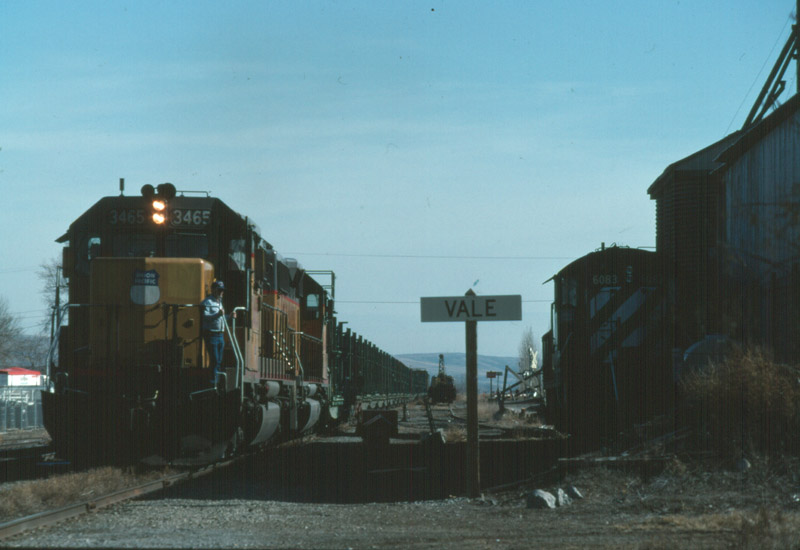 |
|
The fourth UP scrap train on the Burns branch is seen here departing westbound from Vale, OR, behind SD40-2's #3465 and #3844 on 3 March 1994. WYCO roadmaster Loren Canaday is on the front steps of the #3465. Wayne Monger photo. |
|
|
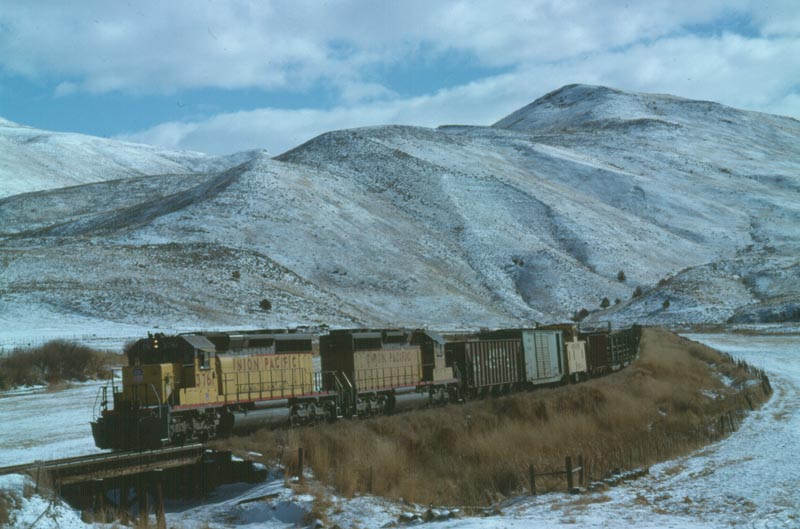 |
|
The morning of 11 February 1994 finds the first UP scrap train moving eastward at a walking pace at Milepost 74.25 behind UP #3761 and #3792. A quarter mile behind the locomotives the track crews are loading a quarter mile of rail at a time into the rail train. Wayne Monger photo. |
|
|
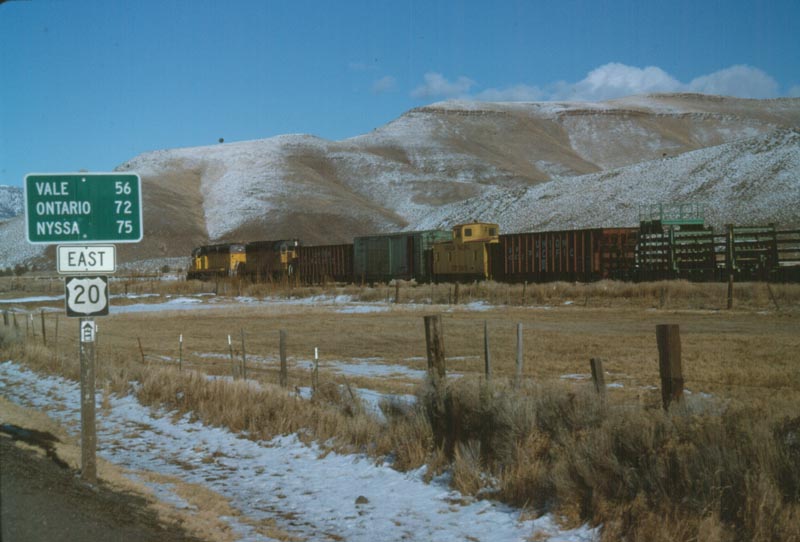 |
|
The first UP scrap train is almost completely loaded and ready to depart eastward. The date is 11 February 1994, and the train is at milepost 73.1. Wayne Monger photo. |
|
|
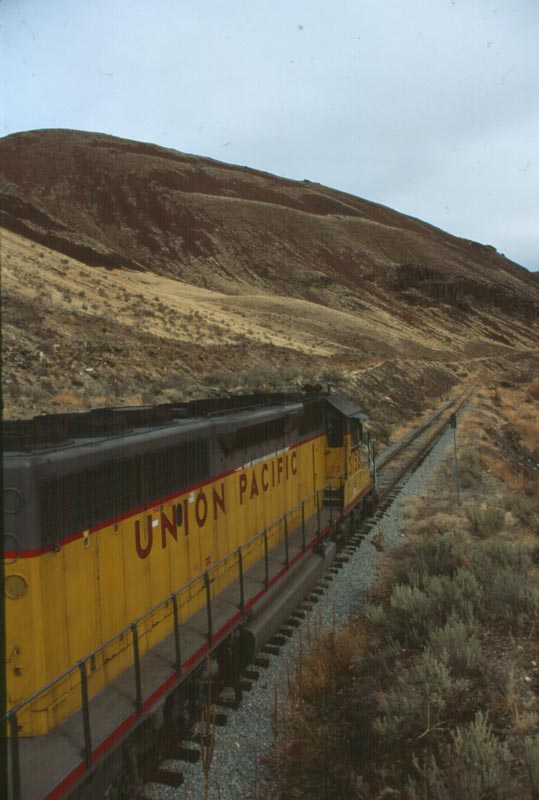 |
|
The second UP scrap train behind UP #3158 is seen here running eastbound near milepost 65 on 20 February 1994. Wayne Monger photo. |
|
|
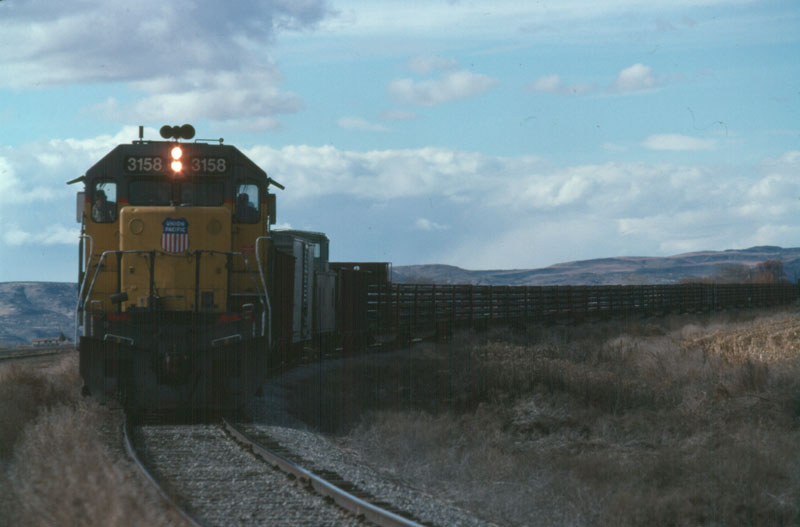 |
|
The second UP scrap train has just left the confines of the Malheur River Canyon and is rounding the first curve east of Celatom at milepost 20.5 on 21 February 1994. Wayne Monger photo. |
|
|
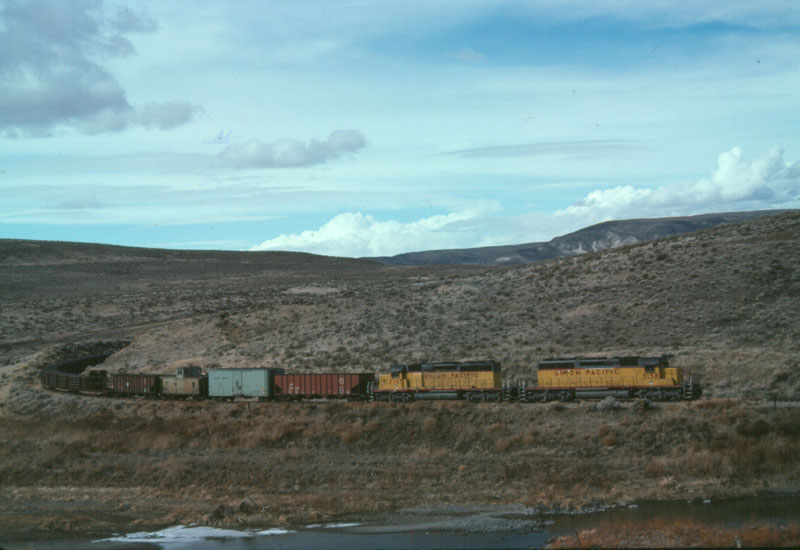 |
|
UP #3158 and #3747 lead the second UP scrap train eastbound at milepost 33.0, about two miles east of Little Valley, on 20 February 1994. Wayne Monger photo. |
|
|
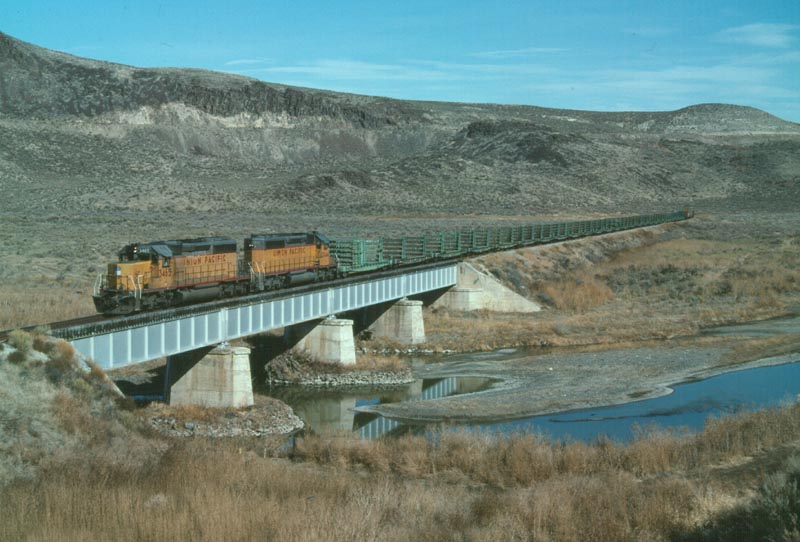 |
|
The fourth UP scrap train is seen here starting up the Malheur River Canyon at milepost 29. This is the first crossing of the Malheur River east of Celatom. Wayne Monger photo. |
|
|
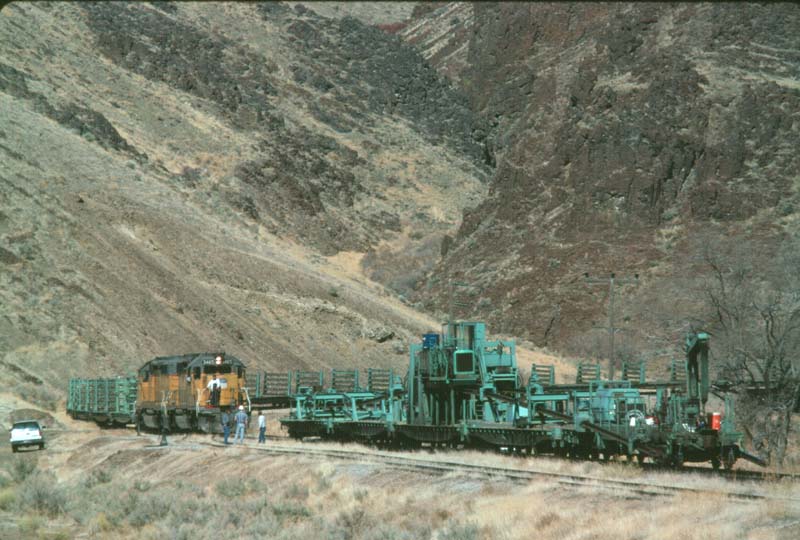 |
|
The fourth UP scrap train is seen here arriving at Namorf on the afternoon of 3 March 1994. UP's rail pick-up machinery is in the siding. Wayne Monger photo. |
|
|
|
The following three photos are a sequence of the second UP scrap train operating at walking speed while passing the 8th crossing of the Malheur River, passing through Tunnel 7, and then crossing the 7th crossing of the Malheur River, on 15 February 1994. Wayne Monger photos. |
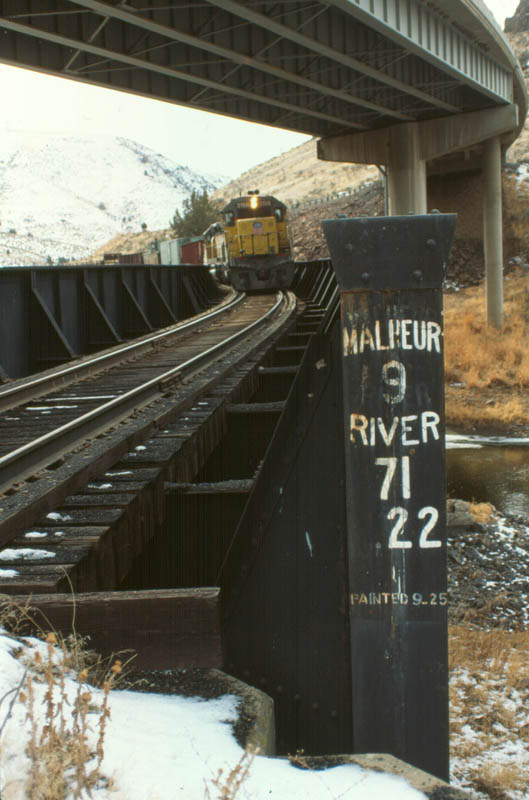 |
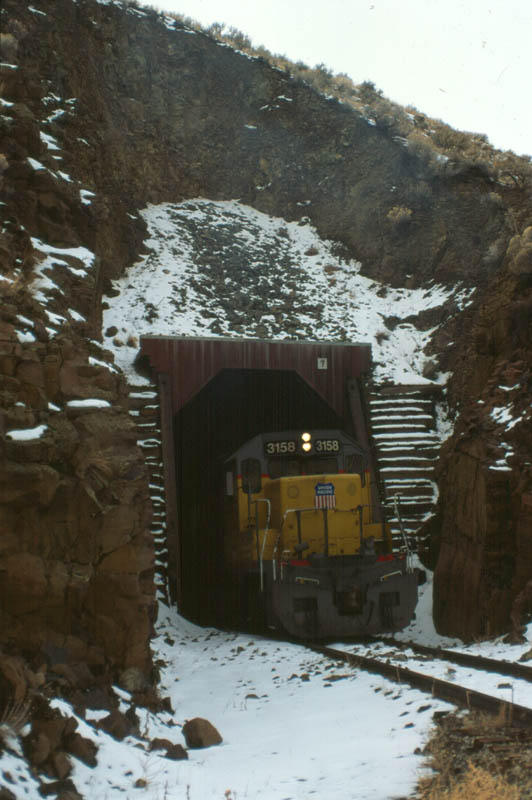 |
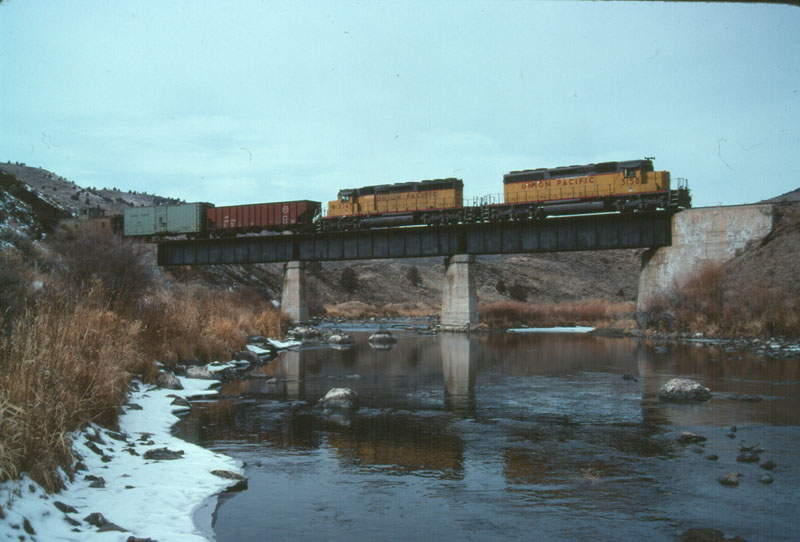 |
|
|
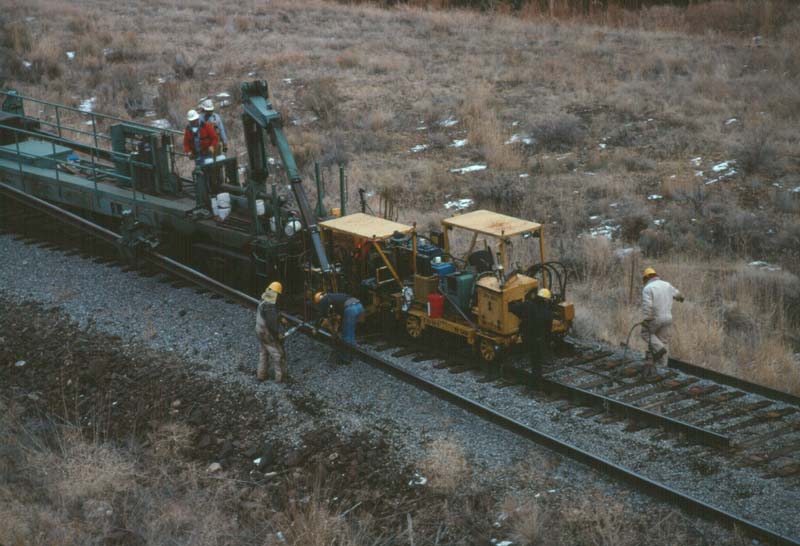 |
|
The business end of the UP scrap trains. The track crews would measure out a 1/4 mile section of rail, which would then be threaded into the rail train. This photo depicts salvage operations at milepost 72.0 on 15 February 1994. Wayne Monger photo. |
|
|
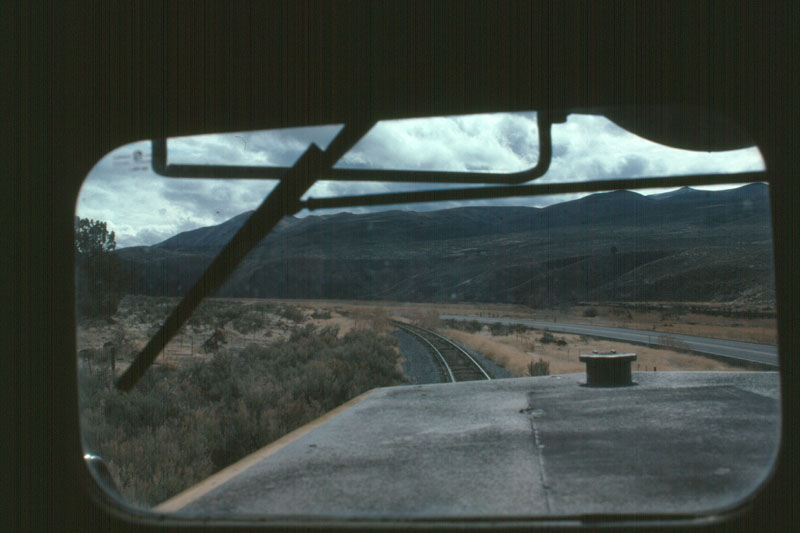 |
|
The view looking eastbound out of the cab of UP #3930. This is the third UP scrap train; the date is 24 February 1994, and the location is milepost 59.0, three miles east of Jonesboro. Wayne Monger photo. |
|
|
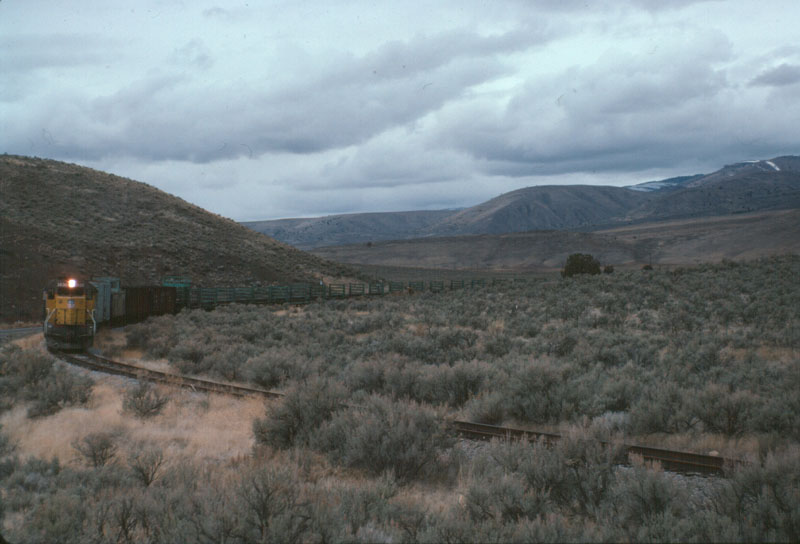 |
|
The third UP scrap train is seen here rounding the big curve at milepost 58.7 on 24 February 1994. Wayne Monger photo. |
|
|
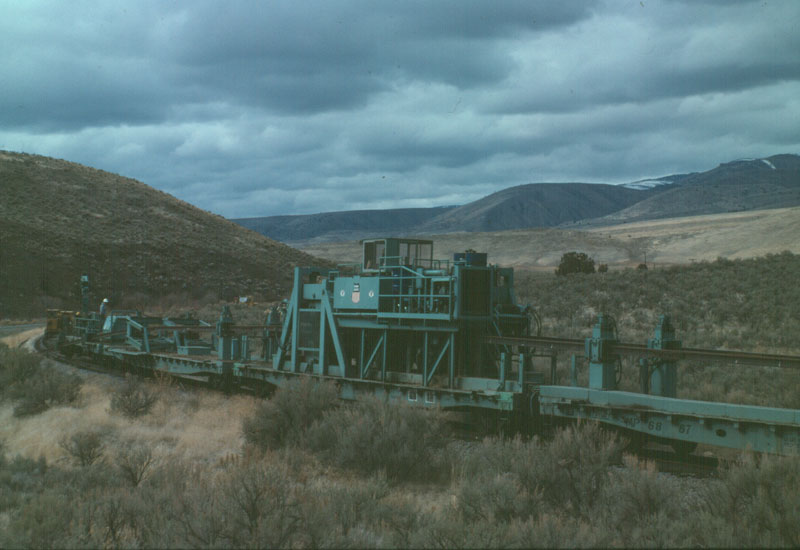 |
|
An hour after UP #3930 rounded the curve the rear of the third scrap train finally arrives. The track crews are busy pulling up the quarter mile stretch of rail that this train just passed over. 24 February 1994. Wayne Monger photo. |
|
|
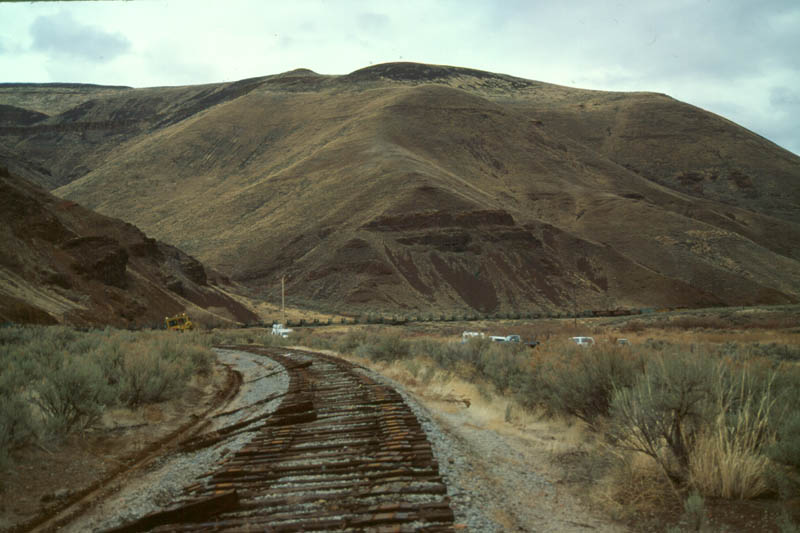 |
|
Two hours ago this looked like any active railroad in the world. The scrap train has finished its job at this location and is visible in the distance pulling up the next stretch of rail. Wayne Monger photo. |
|
|
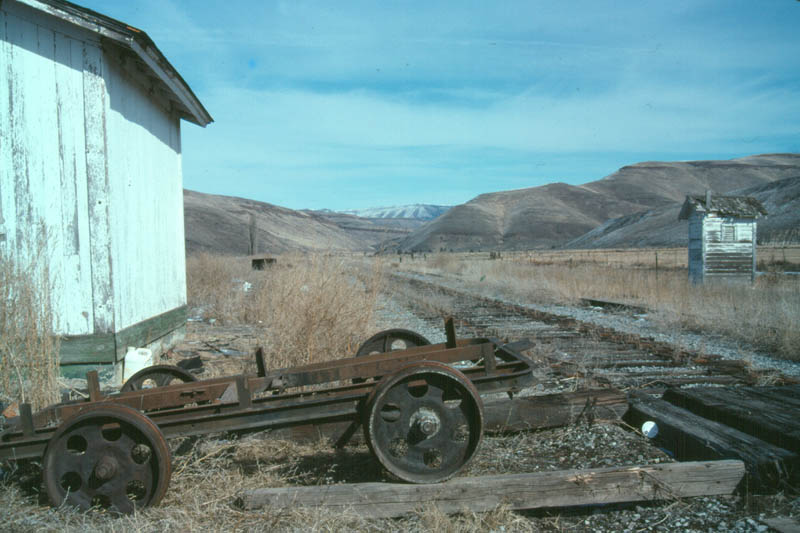 |
|
The thin thread of the Union Pacific branch running westward from Ontario arrived in Juntura in 1914. Initial plans called for this line to be a new joint Southern Pacific-Union Pacific mainline forming the short route for Oregon lumber traffic heading east; however, that dream died in 1912 following the death of Edward Henry Harriman and the forced dissolution of the combined UP-SP system. UP continued to push the branch westward, in search of a reason to justify the investment. That push would end at Crane in 1916, with the subsequent life of the branch depending entirely on what traffic UP's marketing department could find in the Harney basin. A month after the rails departed on the last scrap train a derelict hand cart and some empty section sheds watch over ties, and they are soon to go too. Today only the winds remain to speak about what once was- and what might have been if the history books had been written only slightly differently. Wayne Monger photo. |
|
|